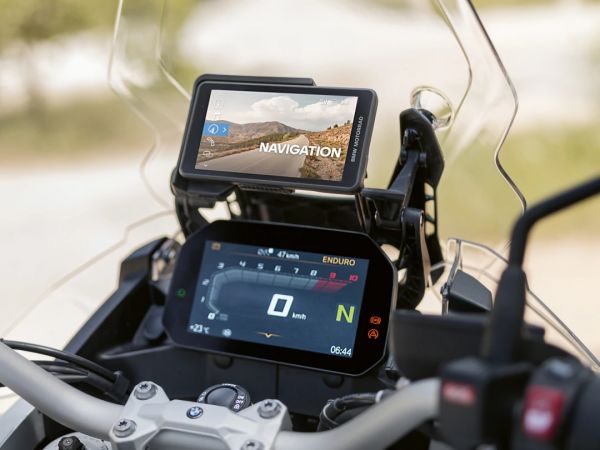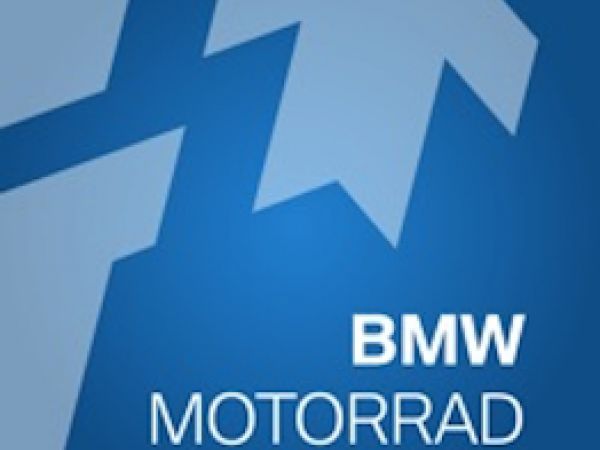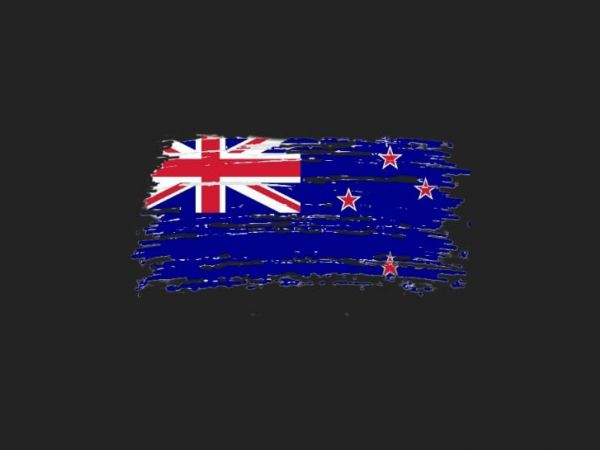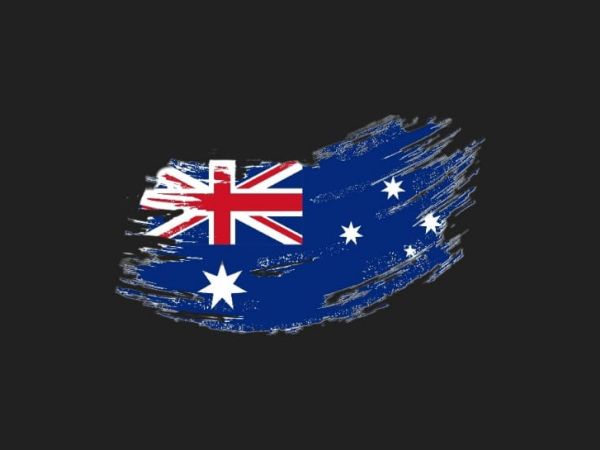Packing list for a motorcycle tour
Packing list for a motorcycle tour
Kategorija: Motociklističke ture | Mjere predostrožnosti
In order not to waste space in your panniers, you should not pack them like this.
OK, the very first and most important fundamental question that everyone should ask themselves before starting to pack for the big motorcycle trip and reading this blog post is the following:
Am I going on a guided motorcycle tour for a period of, for example, 1 to 3 weeks, or am I planning my own motorcycle tour lasting several months through many different countries or even continents?
To put it briefly and clearly, this article is more intended for motorcyclists and participants on a guided motorcycle tour and is certainly important and recommended.
And I know why I am writing this here!
So:
Pack your suitcase and take with you...
(Everything that is listed here are things that you should have with you in many cases, everything else is things that you can take with you but are often not necessary)
Every motorcyclist, whether male or female, is naturally different.
We have put together what we believe to be the most important TOP things that should not be missing from your panniers or suitcases.
Let’s start with the simplest things, clothing and personal items:
Always take long, sturdy trekking pants with pockets with you. Maybe even ones where you can remove the lower part of the trouser legs with a zipper and turn them into shorts (in absolute exceptional cases, also good for motorcycling, but especially good for leisure time between rides).
We don't want to make any distinction between men and women here, because we are all the same on the motorcycle. Our starting point is a 10-20 day motorcycle tour.
- 5 pairs of underwear
- 4 pairs of socks
- 1 pair of swimwear
- 2 pairs of shorts
- 5 T-shirts/shirts (women may also need 2 tops and a bra)
- 1 warm fleece jacket (can also be worn under motorcycle clothing if necessary)
- 1 softshell jacket
- 1 warm hat
- 1 small functional towel (all other bath towels are available at the hotel)
- 1 pair of flip-flops/sandals
- 1 pair of comfortable, sturdy shoes (suitable for longer walks)
- 1 pair of sports shoes
- 1 pair of sunglasses (a must when riding a motorcycle)
Tip:
Packing bags of different sizes keep things organized and reduce the packing volume, making packing your suitcases more pleasant. In addition, different colors of packing bags make it easier for you to find the right bag later.
Guided Motorcycle Tour – Teamwork and shared fun
Hygiene:
- Toiletry bag
- Toothbrush and toothpaste
- Shower gel and hair shampoo (for once it's not a problem if both men and women use the same (an all-in-1 is also more practical for space and weight reasons)
- Hair conditioner (if required)
- Deodorant (has never hurt anyone)
- Tweezers, nail scissors and nail file (it's unbelievable how useful these things can be sometimes)
- Hairbrush
- Hair bands (sometimes a must)
- Sunscreen
- Mosquito spray
- Wet toilet tissues
- Contact lenses, contact lens solution and contact lens case (if required)
Tip for couples on a motorcycle:
As a couple, many hygiene items can be shared, which saves volume and, above all, weight! And weight is a big magic word, in short, load as less weight as possible and heavy objects as low as possible in the panniers. Ideally in the side panniers and not in the main pannier.
Correct loading of a touring motorcycle
Motorcycle clothing:
- Functional underwear (we always recommend wearing functional underwear on hot days as well as cold days)
- Motorcycle pants and motorcycle jacket, basically, the same applies to motorcycle pants as to motorcycle jackets: protection and safety always have priority. This includes abrasion resistance, tear resistance and impact protection. The protectors in motorcycle pants should be on both the knees and hips, as these are the areas most commonly affected in a fall. Always pay attention to the CE certification of the pants. When it comes to material, you can choose between leather and textile. Textile is certainly preferred for adventure tours. Important attributes are versatility, such as comfort in the heat (breathable and ventilation options), cold, water protection and also dirt.
- Motorcycle gloves (possibly 2 different pairs of gloves, for rides on cold days and especially hot days)
- Rain suit (important attribute, the rain suit should be as easy to put on and take off as possible, because this is not always the case with many rain suits and can quickly become annoying and stressful)
- Motorcycle boots (important with a high shaft to protect the ankles and of course very comfortable)
- Motorcycle helmet, probably one of the most important things when riding a motorcycle. Motorcyclists must basically wear a "suitable protective helmet" in every European country. Helmets that have received type approval according to ECE regulation 22.05 and of course 22.06 meet the requirements for a "suitable protective helmet". In many European countries, other, sometimes very strict regulations apply. Wearing a helmet with the corresponding ECE 22 marking is an absolute MUST. If this marking is not on the helmet, you may face high fines or even a ban on continuing to ride. This is how you can tell whether a helmet complies with the ECE standard: There is a patch with the approval number on the chin strap of your helmet. In addition, there is usually a sticker with the corresponding ECE marking on the back of the helmet shell. Example approval number: E1 061401/J-1952,
E1 = country of approval Germany
06 = ECE regulation 22.06 (probably the most important number)
J = jet helmet
1952 = batch number - High visibility vest (in some countries it is compulsory to carry an approved high visibility vest! This should be provided to you by your tour operator)
Tensioning straps and luggage nets
Travel documents, bank cards, money and spare motorcycle key
- ID card (check expiry date!)
- Passport (check expiry date!)
- Driver's license (motorcycle license please)
- In addition an International driver's license (International Drivers Permit, important in many countries and dependent on your country of origin)
- Vehicle registration document
- Green insurance card (note country validity, is automatically provided on our tours)
- Border crossing permit (required for rental motorcycles and is automatically provided with us)
- Health insurance card
- Foreign health insurance with the option of repatriation in the event of damage (Global Rescue offers very high-quality insurance)
- EC card
- Credit card (if possible, two cards are better)
- Always have some cash (you can get quite far with the EURO within Europe, otherwise money can be exchanged at the exchange offices at the border crossing into the required local currency, or you can simply use your credit card to exchange)
- Spare motorcycle key (always better than you would have and your tour operator should take care of it)
Tips or at least an attempt to give a tip:
Now the legitimate and good question arises: where is the best and safest place to keep all these documents, credit cards and cash? I am aware that most of you store these items SAFELY somewhere in your motorcycle cases or bags.
All of this may be safely stored in the cases, but that is probably the only thing that can be considered safe. Although it is very rare for a motorcycle to be stolen, there are supposed to be such cases and once it is stolen, that is one too many stolen.
Because along with the motorcycle, everything else that was stored so safely is stolen too. And constantly being on the motorcycle is not the solution either. So for me it is clear. Such important things stay on the man or woman. But where? In the jacket pockets? There is often not much space there. I have tried and tested the most amazing things, bought things and found them good, and then discarded them again because they simply weren't practical enough.
The goal MUST be to keep these things, as already mentioned, on your body and to always have them with you. So only a shoulder bag, a belt bag or leg bag, a bum bag (worn at the front or back), or something similar comes into consideration. As I said, I have tried a lot of things, but have not yet found the perfect solution.
The parameters that must be met are clearly defined: the bag must be comfortable when riding and it must not be a hindrance in any way when riding.
Wearing the bag must also be comfortable after sitting in the saddle for 2 hours. It must be comfortable when getting on and off the motorcycle and when walking. You must not have the feeling that the bag is constantly slipping on your leg, for example.
The bag must also be easily accessible, for example to get your cell phone, cash or credit card out. Of course, it has to be absolutely waterproof.
Don't forget that the jacket waistband of a thick motorcycle jacket may actually sit on a leg pocket when sitting on the motorcycle because the jacket is longer and therefore extends beyond the leg pocket.
What happens, for example, when the rain suit is worn and so on and so forth. You see, you can write thousands of words about this simple and easy topic and still not find the perfect solution.
I have therefore come to the conclusion that you have to find the right solution for yourself because every body type and every motorcycle clothing is different. Therefore, giving advice here would not mean that it would also be implementable for you in a positive sense.
But no matter what you do, nothing will change the statement that these personal and important items belong on the body.
No matter how you decide to solve this problem, it is always advisable to make copies of the most important documents, but I would not keep these in the panniers on the motorcycle either, because if the worst case scenario were to happen that the motorcycle is stolen, the thief would not only have the motorcycle, but also all of your personal data and information.
This happened to me once in Barcelona on New Year's Eve. Exact date, December 31, 2014. I will NEVER forget it. It is hard to believe what certain people can do with certain data and information and what they can achieve. This lesson cost me several thousand euros. The damage that was caused was done within a few hours. Professionals!
I don't even want to go into the work and stress that will be involved in replacing all the documents and cards and of course having them blocked straight away, because I'm sure everyone can imagine that.
If you make copies of your documents, please make digital copies and transfer them to a cloud somewhere, because you will certainly keep a closer eye on your cell phone and keep it safe. A cell phone should be sufficiently secured anyway and should always be with you.
Touring equipment as a reminder
First aid kit:
- Bandages and a motorcycle first aid kit (mandatory in many countries and always included with our motorcycles for our motorcycle tours)
- Disinfectant spray
- Medicines such as painkillers (possibly fever-reducing), wound and healing ointment
- Possibly anti-diarrhea medication/charcoal tablets
- Anti-nausea and vomiting medication
- Magnesium and multivitamin soda (also good for improving the taste of drinking water)
Tip:
Most medications are non-prescription medications and can also be bought in the local pharmacy along the route. Often even cheaper than in your home country! But, who has it, has it, and sometimes you are happy when such things are immediately to hand without having to search for them for a long time.
Navigation & communication
You don't normally need to worry about navigation on a guided motorcycle tour. This is clearly the task of your tour guide and is his sole responsibility. If this were not the case, you could do without your tour guide altogether.
We provide the "gpx" data and, above all, the associated track data on our motorcycle tours. This means that if you lose sight of each other, you don't need to worry about spending the night alone somewhere.
In addition, the motorcycles on such tours are always equipped with GPS, so that your tour guide knows where you are in just a few steps. This has NOTHING to do with surveillance, this is just one of many precautionary measures to bring you and all the other participants home safe and healthy.
All motorcycles are also equipped with an SOS emergency call system.
As far as communication between participants during the ride is concerned, it certainly depends on the individual participant whether they want this communication at all. But ultimately everyone can decide for themselves. The fact is that all participants in a motorcycle tour can be integrated into this MESH group via a MESH connection and even different manufacturers, such as Cardo or Sena, are now compatible. However, this always depends on whether you have equipped your own helmet with such a communication system or not. Everything is possible, but nothing is mandatory.
Camping, outdoors and overnight stays
As a participant in a guided motorcycle tour, you generally don't need to worry about camping or outdoor life. Your tour provider or tour organizer will take care of everything, from overnight stays in suitable accommodation, including booking or reserving them, to possible camping options with a tent, caravan or whatever. Of course, this always depends on the respective service description of a tour.
Power supply on your motorcycle tour
- USB charging adapter for 12V on-board socket
- USB charging cable (connections depend on your smartphone type)
- Travel adapter for the socket (available in specialist shops in cube form, compatible with the most important sockets and USB ports)
Photo and video
- Your camera, if you want to take it with you on your tour
- Perhaps a drone (but be careful, in some countries an import permit must be applied for in advance when entering the country. If this has not been done, the customs officer can and will confiscate the drone after seeing it. Therefore, extreme caution is advised here)
- Any spare batteries for your devices
- USB memory card
- USB charging cable
Tools, motorcycle accessories and maintenance materials
If you are going on your own motorcycle tour, you should look into this topic in detail, depending on your motorcycle type and your travel route. But since we are talking and writing about guided motorcycle tours where your tour operator also provides the motorcycles, you don't need to worry about anything here either. So neither about
- various tools (for any necessary repairs of all kinds)
- cable ties, duct tape and insulation tape
- spare parts
- tire pressure gauge
- mini compressor
- tire repair kit
- tire tubes
- oil (not just any oil, but the right oil with the right specifications)
- brake fluid
- WD-40
- superglue
- assortment of screws and nuts
- chain cleaner and chain spray
- headlamp
- additional tensioning straps for luggage and also luggage net
and so on and so forth. Because all of these things are the responsibility of your tour operator, of course only if they also provide you with the motorcycle for the tour.
However, if you are going on a guided motorcycle tour and your tour operator does NOT provide the motorcycle, i.e. you are taking part in this tour with your own motorcycle, then these things are of course your responsibility.
Different case systems
Final basic tip:
Everything, or almost everything, can be bought locally along the route. Whether it is common medication, clothing or electronics.
This means that packing in advance or “just in case” is unnecessary and only takes up pointless storage space and above all promotes excess weight! Excessive weight of the motorcycle, mind you.
Frank M.
MotoGS WorldTours
MotoGS Rental Croatia
TAGS
wd-40 tire tubes tire repair kit tire pressure gauge tension straps superglue oil motorcycle tools mini compressor luggage net insulating tape headlamp duct tape chain spray chain cleaner cable ties brake fluid assortment of screws and nutsPodijeli svoje mišljenje
Podijeli svoja iskustva, pitanja ili prijedloge!
Komentari drugih motorista
Još nitko nije komentirao – što ti misliš?
Blog kategorije
Moto Ture

* Balkan-Italija Moto Avantura
Otprilike 3750 km!
14 dana putovanja kroz 5 zemalja!
15 noćenja + 2 noćenja na trajektu!

* Balkan-Karpati-Albanske Alpe Moto Avantura 2
Otprilike 5050 km!
21 dana putovanja kroz 7 zemalja!
27 noćenja!

* Balkan-Rumunjska Moto Avantura
Otprilike 3500 km!
11 dana putovanja kroz 5 zemalja!
12 noćenja!

* Balkan-Karpati-Albanske Alpe Moto Avantura 1
Otprilike 4055 km!
15 dana putovanja kroz 7 zemalja!
18 noćenja!

* Hrvatska-Italija-Francuska Moto Avantura
Otprilike 3550 km!
15 dana putovanja kroz 4 zemalja!
17 noćenja + 1 noćenje na trajektu!

* Hrvatska-Sicilija-Amalfijska Moto Avantura
Otprilike 4390 km!
18 dana putovanja kroz 3 zemalja + Sicilija !
21 noćenja + 1 noćenje na trajektu!

* Novi Zeland Moto Avantura
Otprilike 6650 km!
20 dana vožnje kroz Južne i Sjeverne otoke!
24 noći + 1 noć na kruzeru!

Croatia - Route des Grandes Alpes, July 2025
2 Americans - 1 boy and 1 girl, 1 motorcycle - a BMW R1250GS, one motorcycle tour and one goal ...

Balkans - Romania Tour, June 2025
At the end of June 2025, the time had finally come. Between June 23 and June 25, all participants in this tour gradually arrived in Trogir.

Balkans - Italy Tour, May 2025
Together we covered about 3700 km, crossing the Adriatic twice, from Durrës to Bari and from Ancona to Split.

Money protection in the event of insolvency
Money Protection Certificate according to § 651r and § 651w of the Civil Code of the Federal Republic of Germany ...

Packing list for a motorcycle tour
Pack your things and get going...

Travel planning and navigation
The next vacation is just around the corner, hopefully, and you've decided to finally ...

Riding a motorcycle in a group or alone?
Riding a motorcycle in a group or riding alone? Are you worried about safety, contact with other people ...

The International Driving Permit
Understanding the International Driving Permit (IDP). A Key to Smooth Overseas Riding for ...

BMW Motorcycle ConnectedRide Navigator
The new BMW Motorcycle ConnectedRide Navigator ...

BMW-ConnectedRide Cradle and Connected App
Riders of new BMW models have several options for using information and entertainment ...

Traffic regulations in Oceania - New Zealand
What should be considered on a motorcycle tour through New Zealand?

Traffic regulations in Oceania - Australia
What should be considered on a motorcycle tour through Australia?







